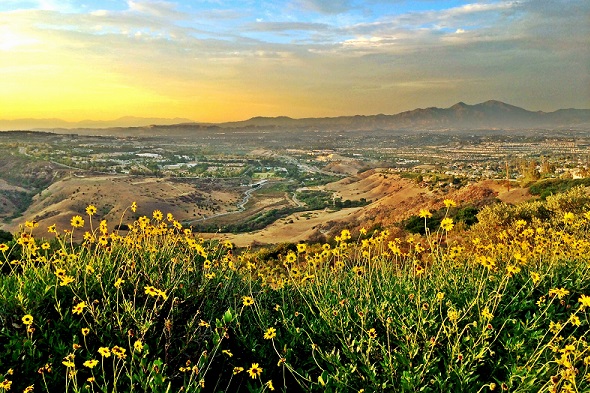Can we just stop fracking, already?
Published in the May 2016 issue of the New Internationalist.
On 23 October 2015, the Southern California Gas Company discovered a methane leak at its Aliso Canyon natural gas storage facility, some 80 kilometres from downtown Los Angeles. It was a big one, quite possibly the largest leak in US history. Day after day, Aliso Canyon was releasing carbon emissions equivalent to those produced by 4.5 million cars, more than doubling emissions for the entire Los Angeles area. It took until February for the leak to be finally plugged.
‘It’s the climate equivalent of the BP disaster in the Gulf of Mexico,’ the Guardian reported.
Aliso Canyon (below) not only dealt a dispiriting blow to everyone concerned with global warming, it shattered one of the central myths of the natural gas boom that has been driven in recent years by hydraulic fracking. The industry has repeatedly argued not only that fracking is safe, but that natural gas is a clean, environmentally responsible ‘bridge fuel’ that can serve as an essential step in the transition away from coal and oil. Yet, again and again, environmentalists have cast doubt on these claims.
In the frack-happy state where I live, Pennsylvania, watchdogs charge that hydraulic fracturing has contaminated the drinking water supply of residents in more than 200 documented cases. In terms of greenhouse gas emissions, a report by Environment America found that ‘global warming emissions from completion of fracking wells since 2005 total an estimated 100 million metric tons of carbon dioxide equivalent’.
Even if natural gas could be fracked safely, it must be stored and transported. And as the Aliso Canyon disaster demonstrated with such distressing clarity, this creates room for devastating errors.
Given this, it’s fair to ask: ‘Can we just stop fracking, already?’
Fortunately, there have been some signs of progress. Plummeting oil and gas prices have left the US fracking industry in disarray, leading energy giants such as Chesapeake Energy, Continental Resources, and Whiting Petroleum to announce at least temporary shutdowns of drilling operations on major shale formations in the United States.
But low oil prices – which can lead American consumers to rekindle their love of fuel-guzzling monster cars – hardly represent a sustainable solution. Instead, we need political action. Even if energy prices rebound, the public must insist that the social and environmental cost of continued fracking is simply too high.
In New York State, Governor Andrew Cuomo once vowed to welcome fracking, citing the ‘vast economic potential’ of the state’s Marcellus shale. But he did an about-face and announced a statewide ban on the drilling practice after activists insistently shadowed him at public appearances, confronting him at events including the state fair and the Manhattan launch of his book, All Things Possible: Setbacks and Success in Politics and Life.
Cuomo did not make clear whether he considered the reversal on fracking to be a setback or a success in his political life, but for environmental campaigners it illustrated the things that indeed become possible with sufficiently determined action.
From Aberdeen, Scotland, to Pittsburgh, Pennsylvania, dozens of states and municipalities have passed their own fracking bans in recent years. In Britain, high-profile clashes between police and protesters in the Sussex town of Balcombe led Chris Faulkner, a US energy executive known as the ‘frack master’, to complain that concern about public disquiet was rippling across his sector. Allan Campbell, the Australian founder of the firm that had hoped to drill in Balcombe, admitted he had ‘underestimated the political aspect’ of his company’s fracking plans ‘by 100 per cent’.
‘Mate,’ he said to a Sunday Times reporter who asked about the publicity generated by protests, ‘we are getting smashed.’
Up against an industry with massive resources and cosy relationships with politicians, these are only small steps in what is certain to be a long march. But have no doubt: they are the necessary steps for a planet that cannot afford another Aliso Canyon.
__________
Photo Credit: tiny froglet / Creative Commons.
